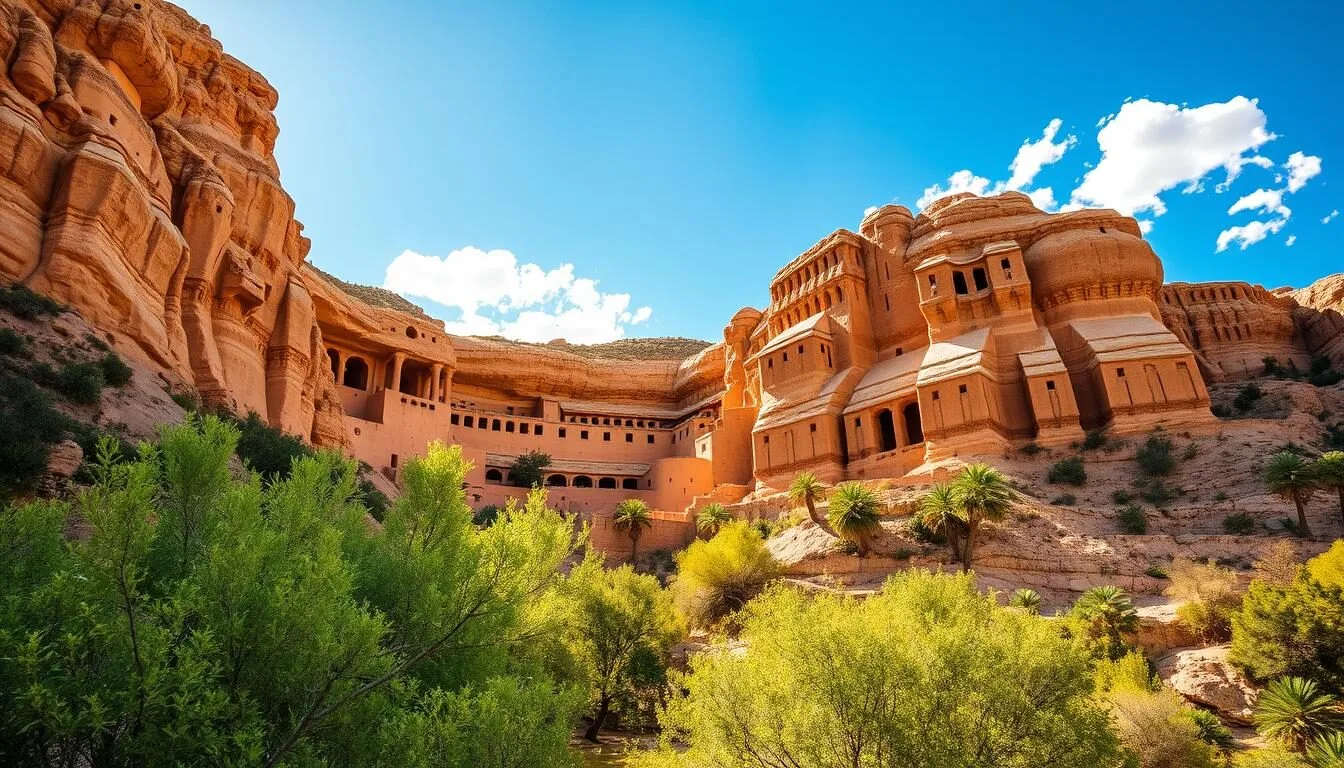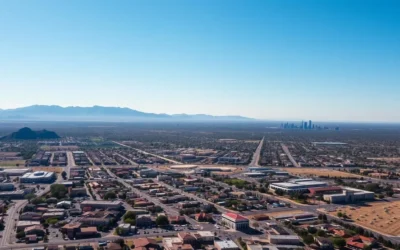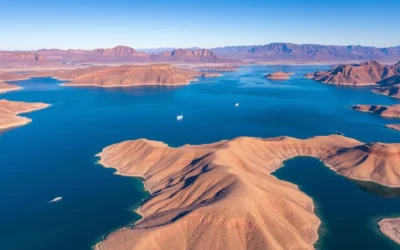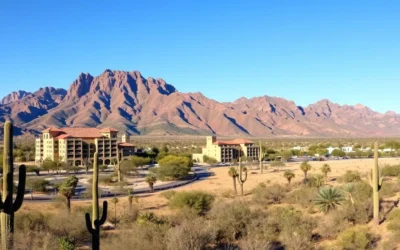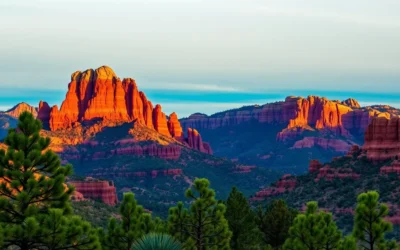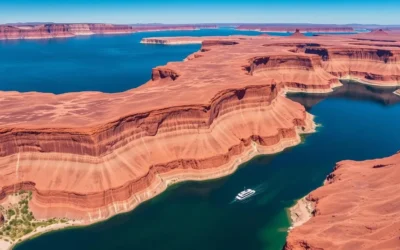✓ Accommodations✓ Flights✓ Rental Cars✓ Tours & Activities
Nestled in Arizona’s Verde Valley, Montezuma Castle National Monument is one of North America’s best-preserved cliff dwellings. For over 400 years, the Sinagua people inhabited this riparian oasis along Beaver Creek, leaving behind a rich legacy that continues to fascinate visitors today.
This National Monument, protected since 1906, offers a unique glimpse into the lives of the Sinagua people. As you explore the monument, you’ll discover the main cliff dwelling, museum exhibits, and nature trails that showcase the area’s natural beauty.
Whether you’re a history enthusiast or nature lover, Montezuma Castle is a must-visit destination. Our guide will provide you with insider tips on the top attractions and activities, ensuring you make the most of your visit.
Discovering Montezuma Castle National Monument
Located in the Verde Valley, Montezuma Castle is one of the best-preserved ancient dwellings in North America. This remarkable site is not actually a castle but a multi-story apartment building for the Sinagua people, who built and inhabited these structures around 1100 CE.
Location and Overview
Montezuma Castle National Monument is situated near Camp Verde, Arizona. The monument is a cliff dwelling that showcases the architectural ingenuity of the Sinagua people. The site comprises a series of well-preserved ruins and dwellings that provide valuable insights into the lives of the people who lived there.
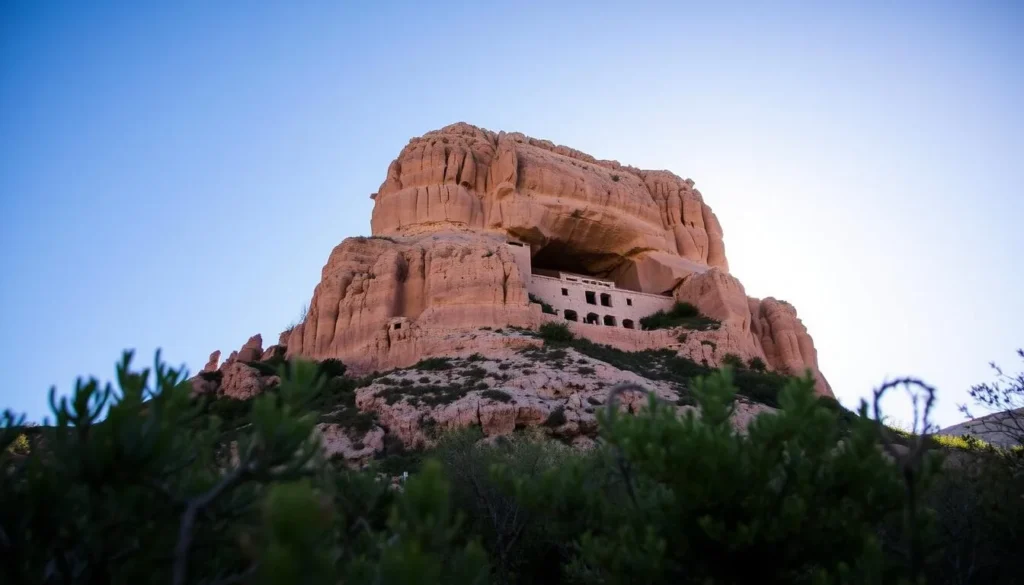
Historical Significance
The historical significance of Montezuma Castle cannot be overstated. As one of the most well-preserved ancient sites in North America, it offers a unique window into the past. Here are some key aspects of its historical significance:
- The monument provides valuable insights into the cultural practices and architectural ingenuity of the Sinagua people.
- It represents an important chapter in North American history, predating European contact.
- The site has been protected since 1906, when President Theodore Roosevelt designated it as one of America’s first national monuments.
- Archaeological studies have revealed important information about prehistoric trade networks and daily life.
The History Behind the Name
As you explore Montezuma Castle, understanding the history behind its name adds depth to your visit. The name ‘Montezuma Castle’ was given by early European-American settlers who mistakenly associated the structure with the Aztec emperor Montezuma.
The Builders of the Castle
The castle was actually built by the Sinagua people, who inhabited this region for over 400 years. Their name, meaning “without water” in Spanish, reflects their ability to farm in an arid environment.
The Sinagua Legacy
The Sinagua people thrived in the Verde Valley from around 600 CE to 1425 CE, building Montezuma Castle during their cultural peak. Their innovative irrigation techniques allowed them to cultivate crops, sustaining their life in the desert. The legacy of the Sinagua continues to inspire future generations.
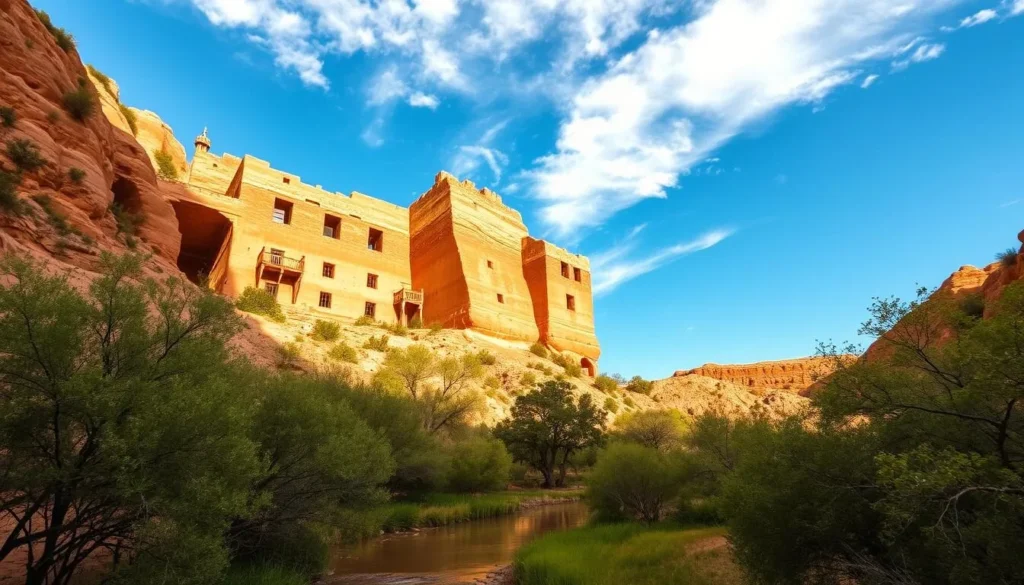
Main Attractions at Montezuma Castle National Monument
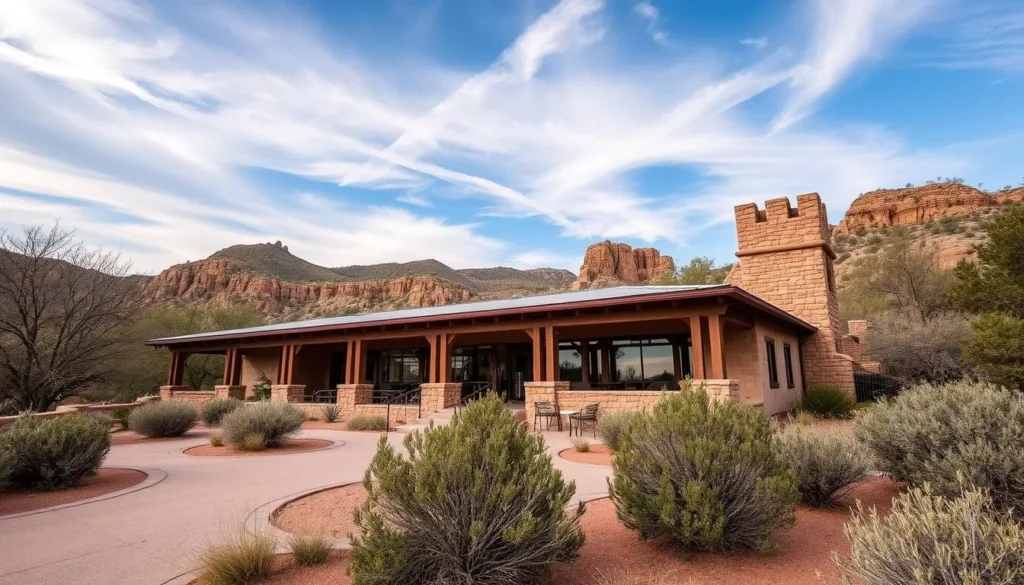
The Montezuma Castle National Monument is an archaeological wonder that offers a glimpse into the lives of the Sinagua people. As you explore this historic site, you’ll discover several main attractions that showcase its rich cultural heritage.
The Ancient Cliff Dwelling
The ancient cliff dwelling is a marvel of Sinagua architecture, featuring 20 rooms and several kivas. This well-preserved structure provides a unique insight into the daily lives of the Sinagua people, who inhabited the area over 600 years ago. As you observe the dwelling, you’ll notice the sophisticated masonry and the resourcefulness of the Sinagua people in utilizing the natural terrain.
Visitor Center and Museum
Upon arrival, be sure to visit the visitor center to gather information about the monument’s history and significance. The museum showcases an array of artifacts, including pottery, tools, and textiles recovered from the site. The exhibits provide context for understanding the daily life, cultural practices, and technological achievements of the Sinagua people. Additionally, the visitor center offers educational films, interactive displays, and knowledgeable park rangers to answer your questions. You can also explore the on-site bookstore for books, educational materials, and souvenirs related to the monument and Native American culture.
Exploring the Monument Trails
With its well-maintained trails, Montezuma Castle National Monument is a great destination for outdoor enthusiasts. The monument offers a unique opportunity to explore the natural beauty and historical significance of the area.
The Main Loop Trail
The Main Loop Trail is a paved and relatively flat path that is perfect for visitors of all ages. This trail allows you to closely explore the cliff dwelling and enjoy the surrounding landscape. As you visit the trail, you’ll be surrounded by the rich history and natural beauty of the monument.
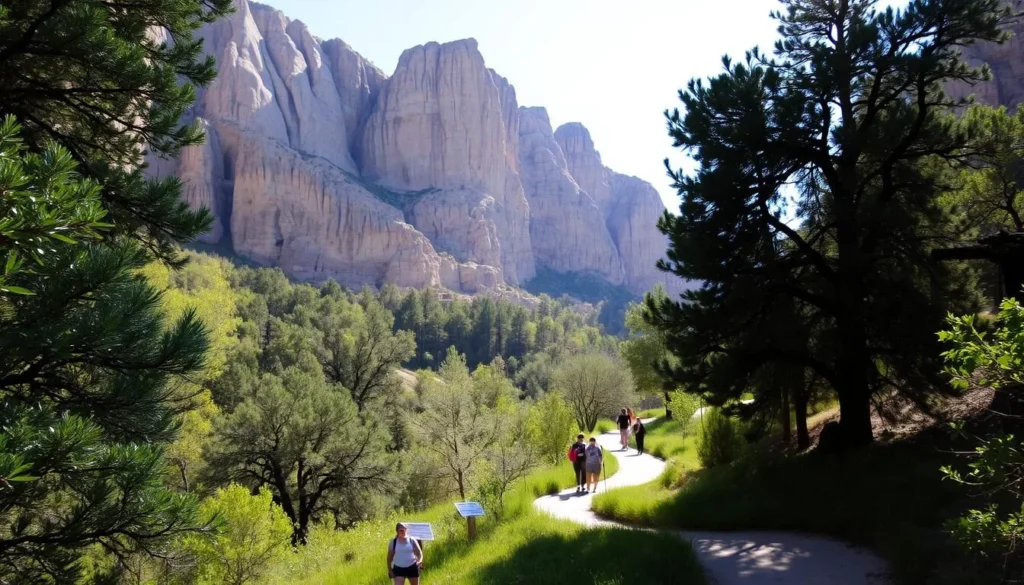
Accessibility Information
The monument is committed to providing accessible facilities for all visitors. The visitor center, museum, and restrooms are designed to accommodate visitors with disabilities. Accessible parking spaces are available near the visitor center entrance.
| Accessibility Features | Description |
|---|---|
| Main Loop Trail | Paved and relatively flat, wheelchair and stroller accessible |
| Visitor Center and Museum | Ramps and accessible facilities for visitors with disabilities |
| Parking | Accessible parking spaces near the visitor center entrance |
For more information on accessibility or to plan your visit, it’s recommended that you contact the monument in advance to ensure a comfortable and enjoyable experience.
Montezuma Well: A Must-See Extension
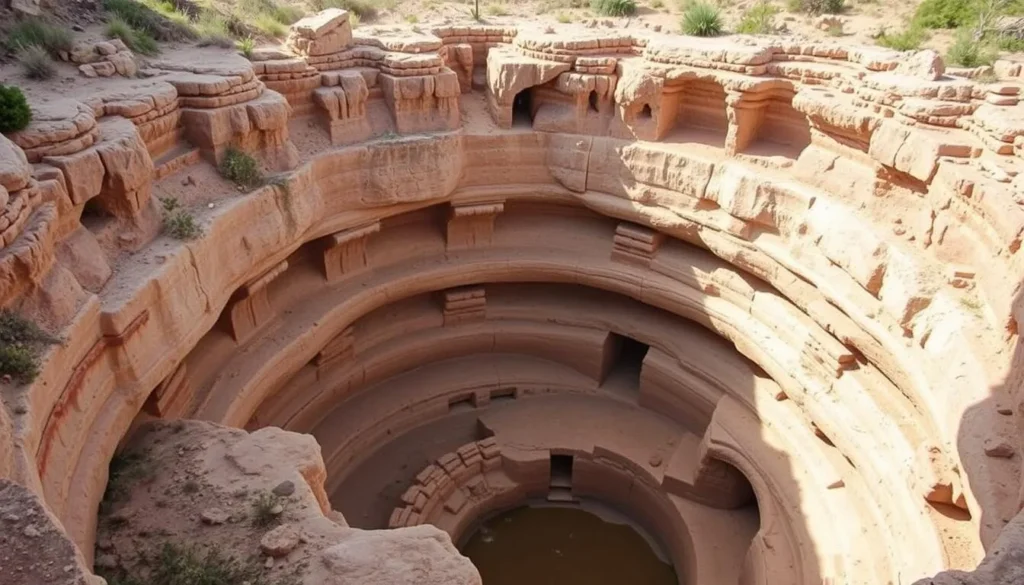
As you explore the Montezuma Castle National Monument, be sure to visit Montezuma Well, a remarkable example of ancient irrigation technology. This site is a testament to the ingenuity and adaptability of the Sinagua people, who developed sophisticated systems to support their agriculture.
Unique Geological Features
Montezuma Well is characterized by its unique geological features, including a large limestone sinkhole that collects water from an underground spring. The site’s natural beauty is complemented by its historical significance, offering visitors a glimpse into the region’s rich cultural heritage. The well is surrounded by ruins that are a reminder of the people who once thrived here.
Ancient Irrigation Systems
The Sinagua people constructed an ingenious irrigation system that channeled water from the spring through canals to support their agriculture. Portions of this ancient system are still visible today, with some sections having been in continuous use for over 1,000 years. Visitors can follow the trail to the outlet where water exits the well and flows into the prehistoric canal system, showcasing the advanced engineering skills of the Sinagua civilization at various sites.
Best Times to Visit Montezuma Castle
The timing of your visit to Montezuma Castle National Monument can significantly impact your experience. Understanding the best times to visit can enhance your exploration of this ancient cliff dwelling.
Seasonal Considerations
While Montezuma Castle is open year-round, the experience varies with the seasons. Visiting in the morning is particularly beneficial during the summer months when temperatures can rise significantly in the afternoon. This allows you to explore the monument before the heat becomes unbearable.
Time of Day for the Best Experience
For the best experience, consider visiting Montezuma Castle in the morning. The morning light provides ideal conditions for photography, illuminating the southeastern-facing buildings without harsh shadows or glare. You’ll also encounter smaller crowds, making for a more peaceful visit. Plan to visit between 8:00 and 10:00 AM for optimal conditions.
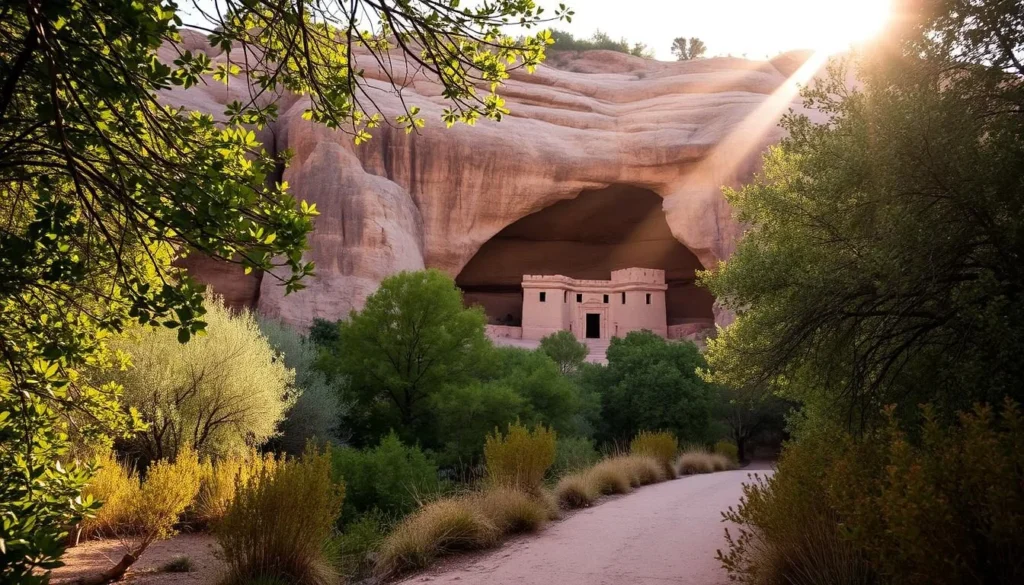
If you’re planning to visit both Montezuma Castle and Montezuma Well in one day, start with the Castle in the morning and head to the Well in the afternoon. This schedule helps you avoid the peak sun and heat, making your visit to the castle national monument more enjoyable.
Photography Tips at Montezuma Castle
With its rich history and stunning natural surroundings, Montezuma Castle is a photographer’s paradise. As you explore this national monument, you’ll find numerous opportunities to capture its unique charm.
Best Angles and Lighting
The best time to photograph Montezuma Castle is during the early morning or late afternoon when the soft, golden light enhances the textures of the ancient cliff dwellings. Experiment with different angles to capture the intricate details of the structure and its surroundings. Consider shooting from a low angle to emphasize the monument’s grandeur.
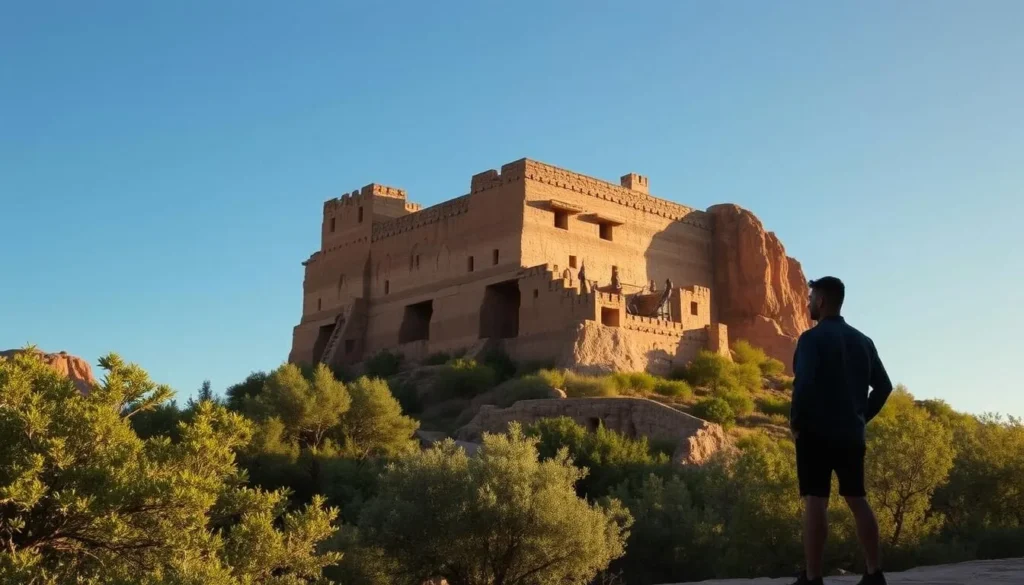
What to Capture
While the main cliff dwelling is a must-capture, don’t miss the surrounding sycamore grove, Beaver Creek, and the various dwellings that tell the story of the Sinagua people. Your camera lens can also focus on the native plants along the trail, the flowing waters of Beaver Creek, and the artifacts at the visitor center and museum. Creating a photo series that captures the monument from different perspectives will convey its scale and setting within the landscape.
- Capture the contrast between the ancient human-made structure and the natural limestone cliff face.
- Document the smaller details that tell the story of the monument, such as construction techniques and native plants.
- Take advantage of the visitor center and museum’s artifacts and exhibits for interesting photographic subjects.
Practical Information for Visitors
To enhance your visit to Montezuma Castle National Monument, familiarize yourself with the essential visitor information. This will help ensure a smooth and enjoyable experience.
Operating Hours and Entrance Fees
The monument’s operating hours and entrance fees are crucial pieces of information for visitors. The monument is open daily from 8 am to 5 pm, with extended hours during the summer months. Entrance fees are $10 per person for adults, with discounts available for seniors and children. For the most up-to-date information, it’s recommended to check the official National Park Service website or contact the visitor center directly.
Facilities and Services
The monument offers various facilities to enhance your visit. The visitor center provides exhibits, a bookstore, restrooms, and water fountains. A picnic area along Beaver Creek offers shaded tables for a scenic lunch. While there are no food services within the monument, the visitor center sells bottled water. Nearby Camp Verde offers dining options. Ample parking is available near the visitor center, though it fills quickly during peak times. Ranger-led programs are available throughout the day, offering deeper insights into the site’s history and significance.
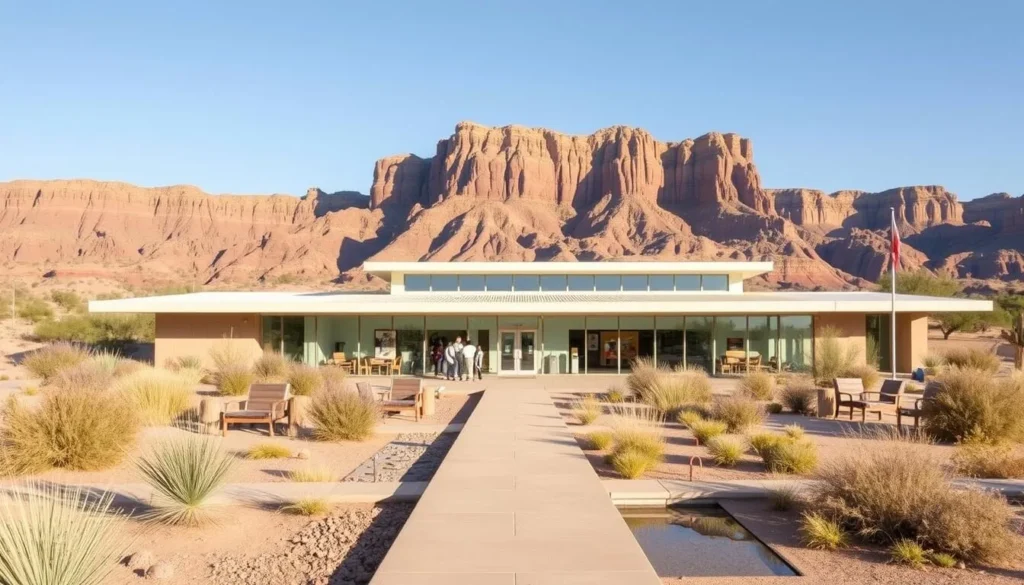
Preparing for Your Visit
Before you head out to explore Montezuma Castle National Monument, it’s essential to prepare for your visit. Whether you’re planning a short trip or an extended stay, being prepared will enhance your experience and ensure your safety during outdoor activities.
What to Bring
When packing for your adventure at Montezuma Castle, consider the essentials. Bring enough water to stay hydrated throughout your visit, as well as sun protection, including a hat, sunglasses, and sunscreen. Wear comfortable shoes suitable for walking on the monument’s trails.
- Water bottle or hydration pack
- Sun protection (hat, sunglasses, sunscreen)
- Comfortable walking shoes
Weather Considerations
The weather at Montezuma Castle National Monument can be extreme, especially during the summer months when temperatures often exceed 100°F. Be prepared for the heat by staying hydrated and taking breaks in shaded areas. The desert climate means significant temperature fluctuations between day and night, so dress in layers for visits during spring or fall.
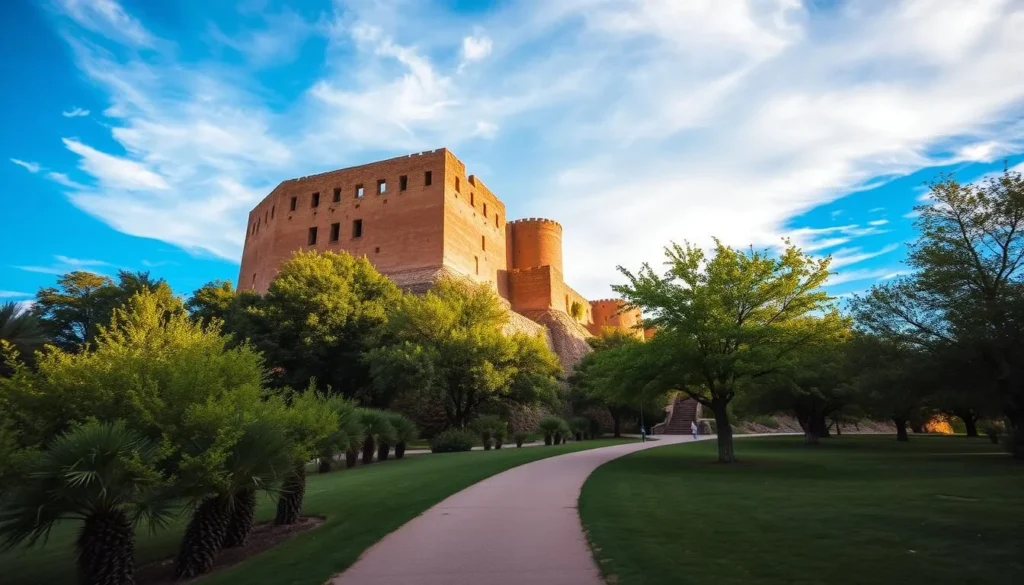
Nearby Attractions and Day Trips
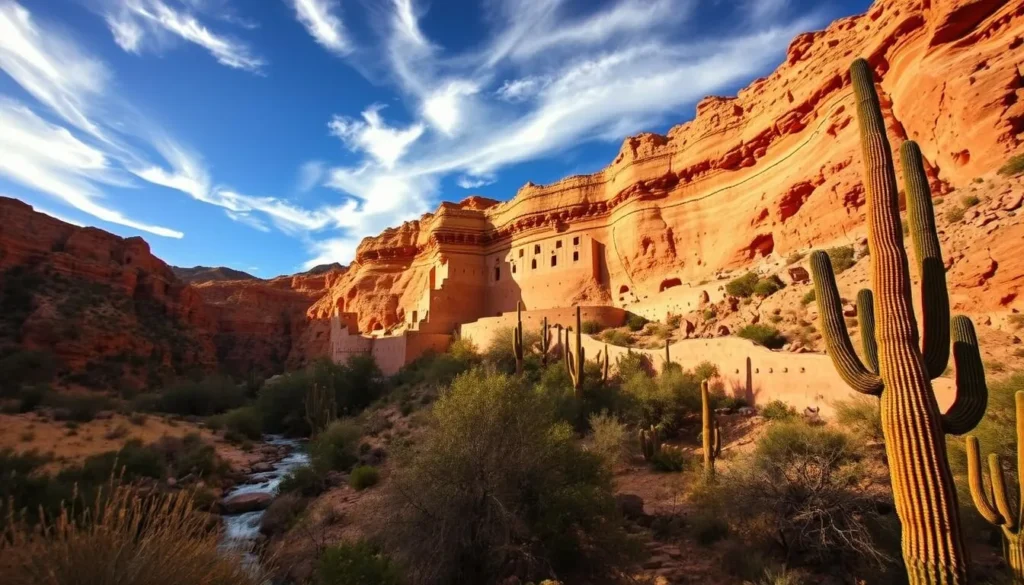
After exploring Montezuma Castle, venture out to discover the charms of nearby Camp Verde and beyond. The region is filled with exciting attractions and activities that can enhance your Arizona road trip experience.
Camp Verde Highlights
Camp Verde is a charming town with a rich history. You can explore the Outdoor activities available in the area, such as hiking and fishing. The town also hosts various events throughout the year, making it a great place to visit.
Sedona and Jerome
Just a short drive from Montezuma Castle, Sedona and Jerome offer unique experiences. Sedona is famous for its red rock formations, while Jerome is known for its artistic community and stunning views. Both destinations are perfect for a day trip.
Verde Valley Wine Trail
The Verde Valley has emerged as one of Arizona’s premier wine regions. You can visit wineries like Clear Creek Vineyard & Winery and Salt Mine Wine for tastings. The Verde Valley Wine Trail features over a dozen wineries and tasting rooms, making it an ideal addition to your road trip itinerary.
Conclusion: Making the Most of Your Montezuma Castle Experience
Visiting Montezuma Castle National Monument is a journey through time, offering insights into the lives of the Sinagua people. This remarkable cliff dwelling is one of the best-preserved in North America, making it an essential stop on any Arizona road trip. To make the most of your visit, consider exploring Montezuma Well and other nearby attractions like Tuzigoot National Monument to gain a deeper understanding of the region’s ancient cultures.
Take your time to engage with park rangers and fully absorb the historical significance and natural beauty of this national monument. By doing so, you’ll transform your visit into a meaningful educational experience, rather than just a quick photo opportunity. With its rich history and stunning ancient cliff dwellings, Montezuma Castle National Monument serves as an excellent introduction to the archaeological wonders of the American Southwest.
The above is subject to change.
Check back often to TRAVEL.COM for the latest travel tips and deals.
